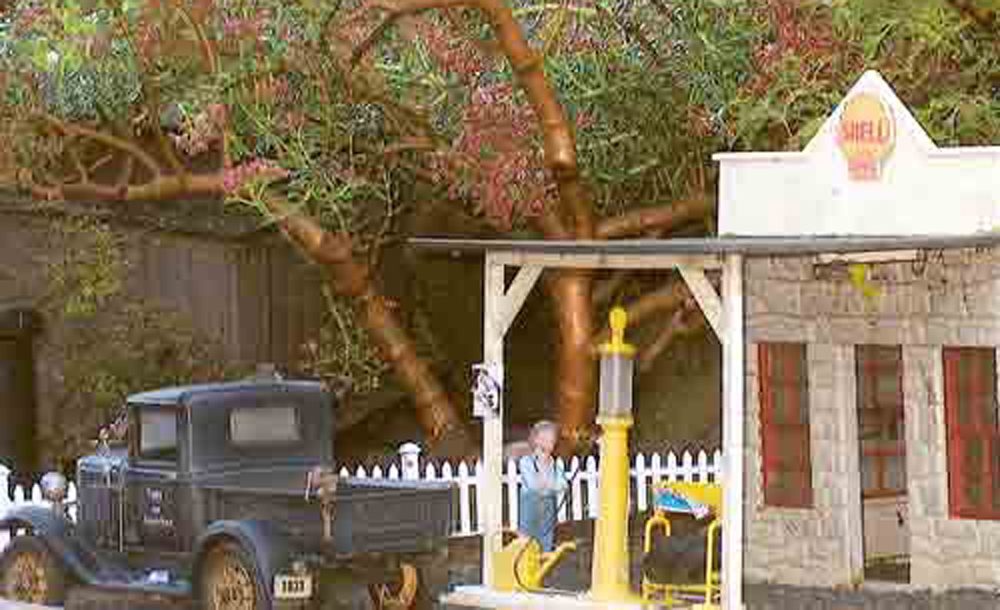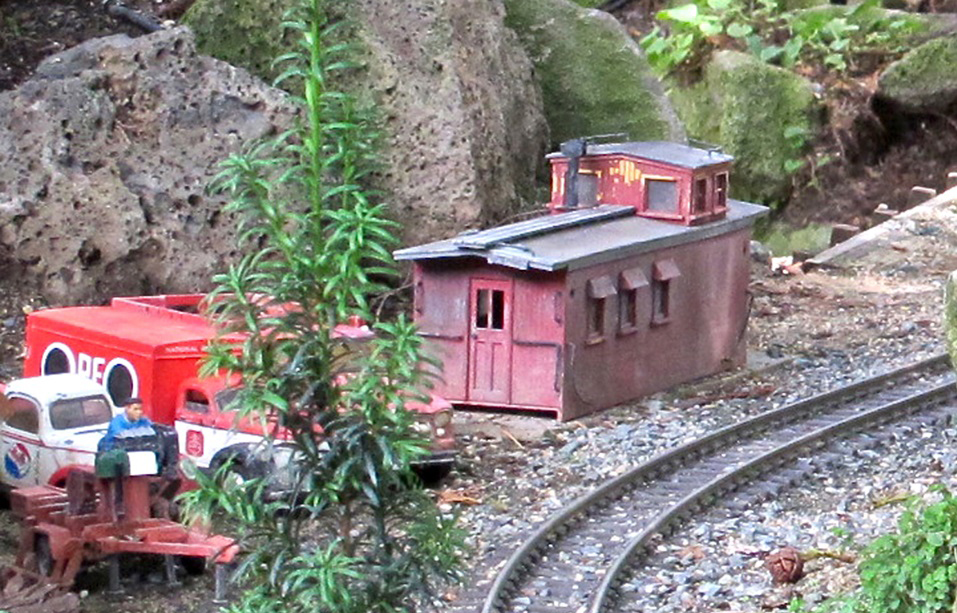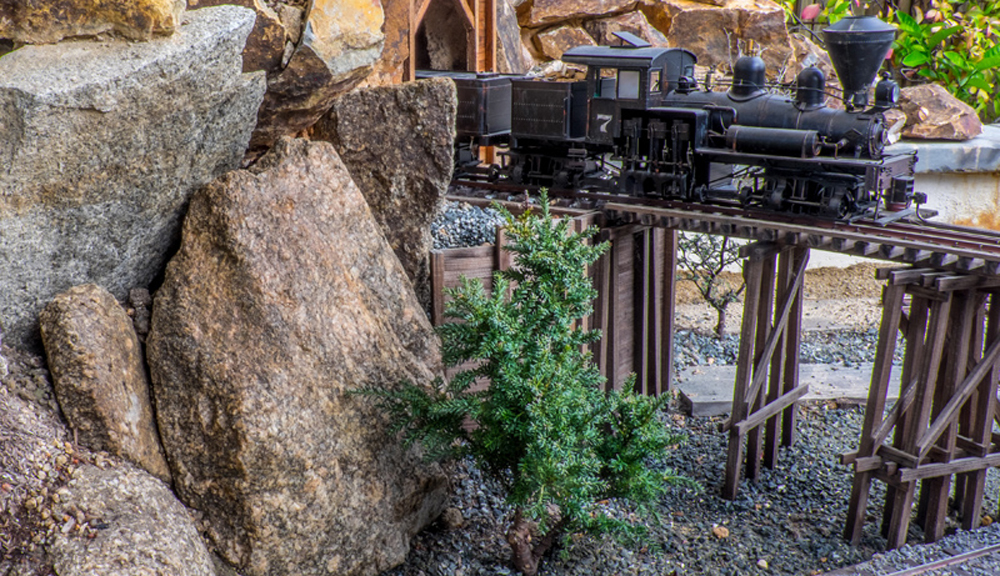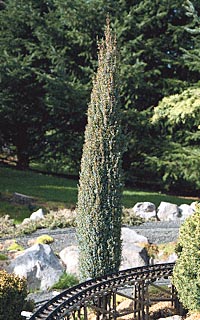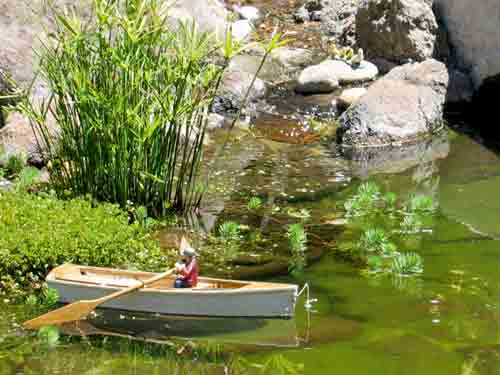
Instead of wishing you had invested in a finished cellar for your railroad, let’s look at environmentally friendly alternatives. Just as we have learned how to care for our locomotives, track, and trees, our water features require maintenance and sometimes retrofitting. Keep the pond and grow plants that do some of that maintenance for you or, as a revolutionary new concept, create a “pondless” water feature! After I show you how some folks have used aquatic plants successfully we’ll look at how to fill that pond for an easy, easy water feature.
It’s alive!
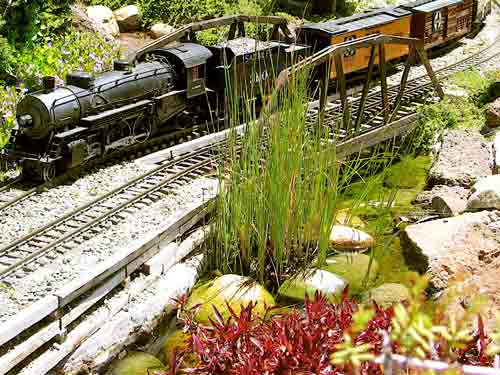
A healthy and attractive water feature is a complex living organism that responds to the elements just as we do. Without a virtual glass of iced tea to cool it down, the pond needs other helpers. Get solutions through online nurseries, like www.pondsplantsandmore.com. What I learned is that 40-50% of a pond’s surface needs to be covered with plants to keep it crystal clear without chemicals. Plants gobble up undesirable nitrates and ammonia from fish and debris. Some plants oxygenate. Photosynthesis results in the oxygenation of water, and microorganisms that use up excess nutrients, so don’t fertilize your aquatics if you have algae “bloom.” Three groups of plants do the trick.
Floaters for shade. Keeping water temperatures down also keeps algae down. With a floating canopy of little plants that simulate lily pads, you are providing the most desirable help. Floaters shade the water and fish, use up nutrients before algae can get started, don’t require planting, and settle easily back to normal after wildlife skirmishes involving marauding raccoons.
Submerged potted aquatics. Leaves float but roots and stems live underwater, anchored in gravel or potted in soil topped with gravel to prevent the soil from muddying the water. Raccoons can have some fun with these less stable plantings, but I’ve seen a solution in the form of a low, electrified, one-wire fence, barely noticeable and hooked up to a battery.
Pretty perimeter plants. Marginals (so-called by nurseries) and bog plants live at water’s edge, barely submerged in pots hidden with stones or in moist soil. This group is so diverse that it includes just about any plant you might fancy, from colorful to carnivorous. In the wild we find some very-large-leaved marginal plants, like gigantic Gunnera, shocking us with rhubarb-shaped leaves bigger than we are. As modelers we can take advantage of this fact and grow larger, leafy plants in the foreground of the pond and make distant plants appear smaller by contrast. Here, taller grassy plants shade the water and call attention to the habitat, differentiating it from other plantings.
Go pondless!
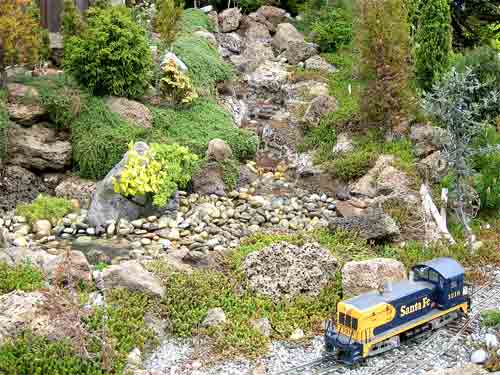
Several years ago I first saw a waterfall emptying into what looked like a field of wet pebbles. Where was the water going? Turns out, there was a substantial hole in the ground lined with pond-liner material or a ready-shaped pond from a home-improvement store. I now use 60- to 100-gallon stock troughs from a feed store. Like nature’s streams, the “pond” is filled with pebbles, large on the bottom, small on top. Reserve an area for the pump so that access is easy. Reservoirs for pumps can be purchased at pond stores or homemade from plant pots. As the water filters through the stones it enters the pump clean, ready for the falls, with no algae to scoop. As with other water features, the pump needs to run 24/7 for aeration, or helpful microorganisms will die and create malodorous fumes.
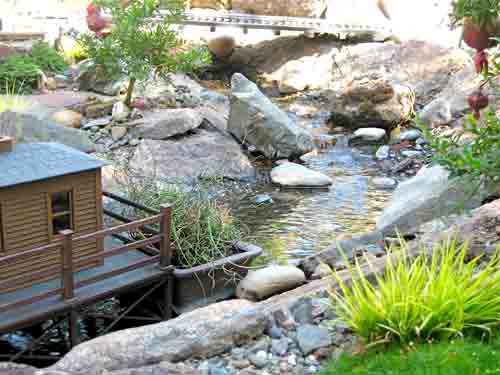
Since learning of this pond alternative, I’ve helped to build several pondless water features to minimize maintenance. Concerned about the cost of running large pumps all the time, I’ve installed a second, smaller pump alongside the big one to aerate the water at night. Pumps alternate duty via automatic timers. Aquatic plants can still be submerged in pots below pebble level to give the effect of water. “Float” a rowboat on the water-sprayed pebbles. Now you can run trains.






